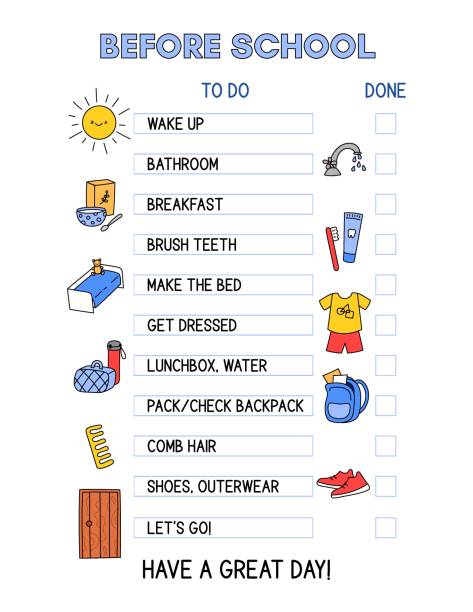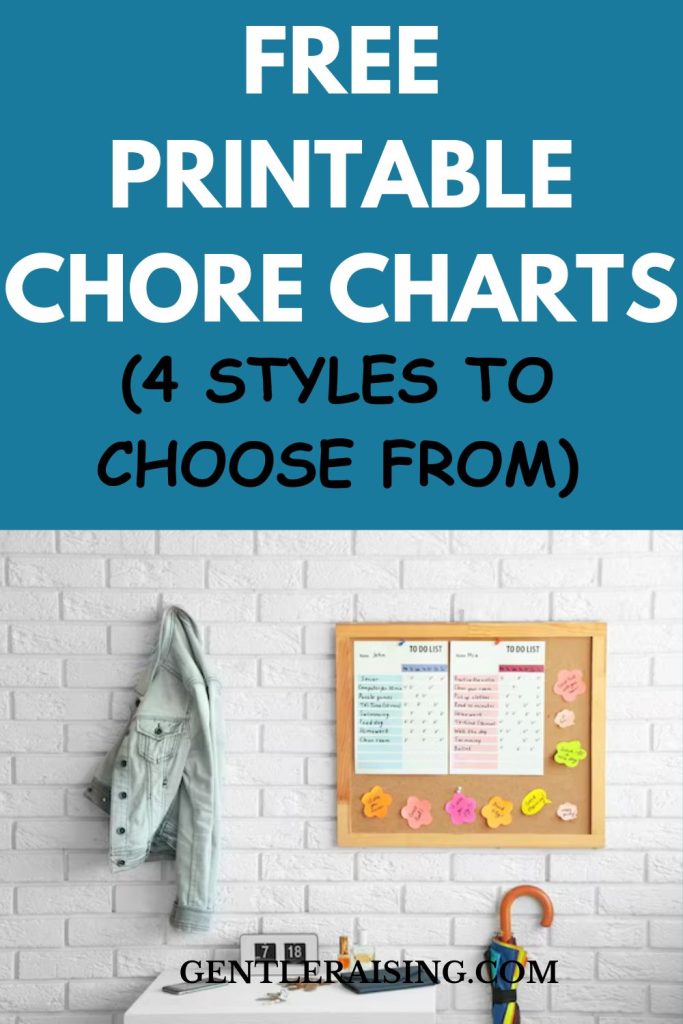Parenting sometimes feels like juggling spaghetti with one hand while balancing on a ball. Between school runs, meals, endless laundry, and the daily clean-up of toy explosions, keeping the house in order can feel impossible. Add to that the sweet (but stubborn) resistance kids often show when you ask them to help, and suddenly, the idea of kids doing chores sounds more like a dream than reality.
Here’s the thing, though, kids can help, and they actually thrive when they do. But they need structure, encouragement, and a system that feels playful rather than bossy. That’s where a chore chart comes in. Even better? A DIY printable chore chart, easy, customizable, and surprisingly fun.
So, let’s talk about how you can create a printable chore chart that works for your family, keeps things organised, and maybe, just maybe, makes your mornings a little less chaotic.
Why Kids and Chores Don’t Naturally Mix (And That’s Okay)
Here’s a secret: kids aren’t lazy. They’re wired for play, imagination, and exploration, not for sweeping crumbs under the table. So when your 5-year-old bolts at the sight of a broom, it’s not defiance; it’s development.
But kids also crave independence and recognition. They love the satisfaction of saying, “I did it!” That’s why chore charts work. They don’t just remind kids what to do; they give children a visible way to track effort and celebrate progress.
Think of it as turning chores into a game board. Each checkmark or sticker is like levelling up. It’s less about “do this because I said so” and more about “look what I achieved.”
What Makes a Chore Chart Actually Work?
Not every chore chart is magic. Some flop after two days, while others stick for months. The difference? A few simple ingredients:
- Consistency over perfection. Missing a day won’t ruin everything, but if the chart disappears into a drawer for a week, it loses its power.
- Visual rewards. Stickers, stars, and checkmarks are surprisingly motivating. Even older kids love seeing progress add up.
- Realistic expectations. Don’t assign your toddler “vacuum the living room.” Choose age-appropriate tasks, or you’ll set everyone up for frustration.
- Family participation. When kids see adults using lists or checking off tasks too, it reinforces the idea that chores are part of teamwork, not punishment.
Here’s the subtle magic: chore charts shift the dynamic from nagging to nudging. Instead of repeating, “Have you cleaned your room yet?” you can gently ask, “What’s left on your chart today?” The responsibility shifts to them.
Why DIY Printables Beat Store-Bought Charts
Sure, you can buy laminated chore boards with fancy magnets. But printables have a charm and practicality that’s hard to beat:
- Affordable: A printer and paper cost far less than a pre-made system.
- Customizable: Every family has quirks. Maybe your mornings are the wildest, or perhaps weekends are chore-heavy. You can tweak a printable to fit your rhythm.
- Creative: Making a chart together can be a fun craft activity. Kids feel ownership if they help pick the colours, themes, or fonts.
- Replaceable: Spilled juice? Scribbled doodles? No panic, just print a new one.
DIY printables keep things simple and flexible, which is exactly what family life needs.
Step-by-Step: Creating Your DIY Chore Chart
Let’s walk through the process, simple, practical, and surprisingly fun.
1. Pick Age-Appropriate Chores
Every child is capable of helping, but not every chore fits every age. Start with what makes sense, then build as they grow.
2. Choose Your Chart Format
Some families like grids with days of the week. Others prefer morning/evening checklists. You might even want a reward tracker built in. The format should match your family’s flow.
3. Design Together
Get creative! You can hand-draw a chart with markers, or use digital tools like Canva, Google Docs, or Microsoft Word. Many parents love Canva because it has ready-to-edit templates that look polished without requiring design skills.
4. Print and Display
Choose a spot kids can see easily, like the fridge or a hallway wall. Visibility keeps chores top of mind.
5. Decide on Rewards (Optional)
Rewards don’t always mean toys or money. For younger kids, it might be a special outing or choosing what’s for dinner. For older ones, it could be extra screen time or a family movie pick.
Chore Ideas by Age
Not sure what’s realistic for your child? Here’s a handy breakdown.
Toddlers (2–3 years):
- Pick up toys
- Put dirty clothes in a basket
- Wipe small spills with a cloth
- Help feed pets (with supervision)
Preschoolers (4–5 years):
- Make their bed (not perfectly, but proudly)
- Set the table with help
- Water plants
- Put away simple groceries
Early Elementary (6–8 years):
- Clear dishes after meals
- Fold small towels
- Sweep with a kid-sized broom
- Help pack their lunchbox
Tweens (9–12 years):
- Load/unload the dishwasher
- Take out the trash
- Help cook simple meals
- Fold laundry
Teens (13+ years):
- Mow the lawn
- Babysit younger siblings briefly
- Do laundry from start to finish
- Cook simple family dinners
The goal isn’t perfection, it’s building responsibility in bite-sized steps.
Adding Fun (Because Fun Sells Chores)
A plain grid might feel dull. But with a little creativity, a chore chart can feel like a game:
- Stickers and stars: Classic, but always effective.
- Themes: Try seasonal designs (pumpkins for October, snowflakes for winter).
- Gamify: Use progress bars, badges, or “level up” systems.
- Sibling competition (the gentle kind): Who earns the most stars this week? The winner chooses the weekend movie.
Play is the secret sauce that makes chores less… chore-like.
When Chore Charts Hit a Wall
Let’s be honest, not every week will be smooth. Sometimes kids refuse. Sometimes you forget to check the chart. Sometimes life just derails everything. That’s okay.
Here are a few troubleshooting tips:
- If kids refuse: Scale back. Assign one easy chore to rebuild momentum.
- If you forget consistency, set a reminder on your phone. Or build a chart check-in into bedtime routine.
- If life gets chaotic, pause the chart during holidays or sickness. Restart gently, without guilt.
The point isn’t rigid perfection, it’s gradual growth.
Free Printable Chore Chart Templates (Ideas You Can Use)
Now, let’s get practical. Here are some popular styles of printable charts you can create (or download from parenting blogs and sites like gentleraising.com):
- Weekly Grid: Days across the top, chores down the side.
- Morning/Evening Checklist: Breaks down routines for smoother transitions.
- Reward Tracker Hybrid: Combines tasks with points or stars that add up to rewards.
- Theme-Based Charts: Space rockets, princess castles, jungle animals, pick what excites your child.
You can design these on Canva, print them at home, and even laminate them for reusability.
Beyond Charts: Building Lifelong Responsibility
Eventually, the stickers fade, and your kids will (hopefully) internalise the value of helping. That’s the real goal.
- Shift from external rewards to internal pride. Praise effort and highlight how chores help the family.
- Model responsibility. Let kids see you tidying, organising, and following your own lists.
- Teach life skills gradually. Folding laundry at 6 becomes managing laundry at 13. Small steps build independence.
Chores aren’t punishments; they’re preparation for real life.
Parent Corner: How to Stay Sane
Let’s be real: chore charts aren’t magic wands. You’ll still have messy rooms and forgotten dishes sometimes. But they can make life easier if you don’t overcomplicate them.
- Keep it simple. One page. Five chores max for younger kids.
- Adjust expectations. The bed will be lumpy. The table might have forks backwards. Let it go.
- Remember the big picture: you’re teaching responsibility, not running a hotel.
And you know what? On the hardest days, celebrate the fact that you’re even trying to raise responsible kids. That’s already a win.
Wrapping It Up
At the end of the day (pun intended), a chore chart isn’t about spotless counters. It’s about teamwork, responsibility, and giving kids that quiet pride of contributing.
So print one out. Try it this week. Let it be messy, playful, and flexible. You’ll be surprised how quickly those little boxes of checkmarks turn into little moments of growth.
And if you’re looking for free, ready-to-use templates? Head over to gentleraising.com for printable chore charts designed for busy parents just like you.
Because let’s face it: life’s a little easier when the laundry basket isn’t just your responsibility.

